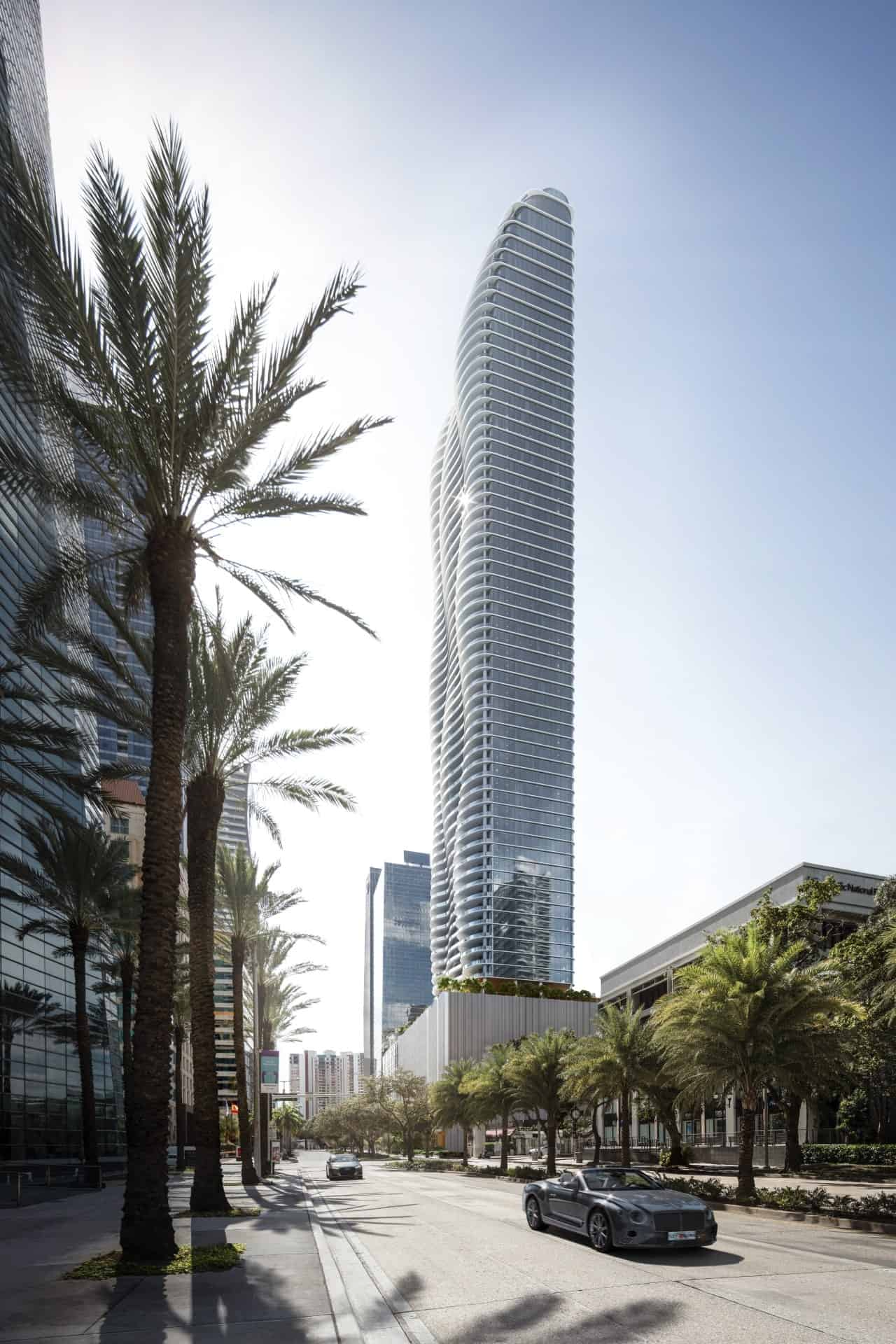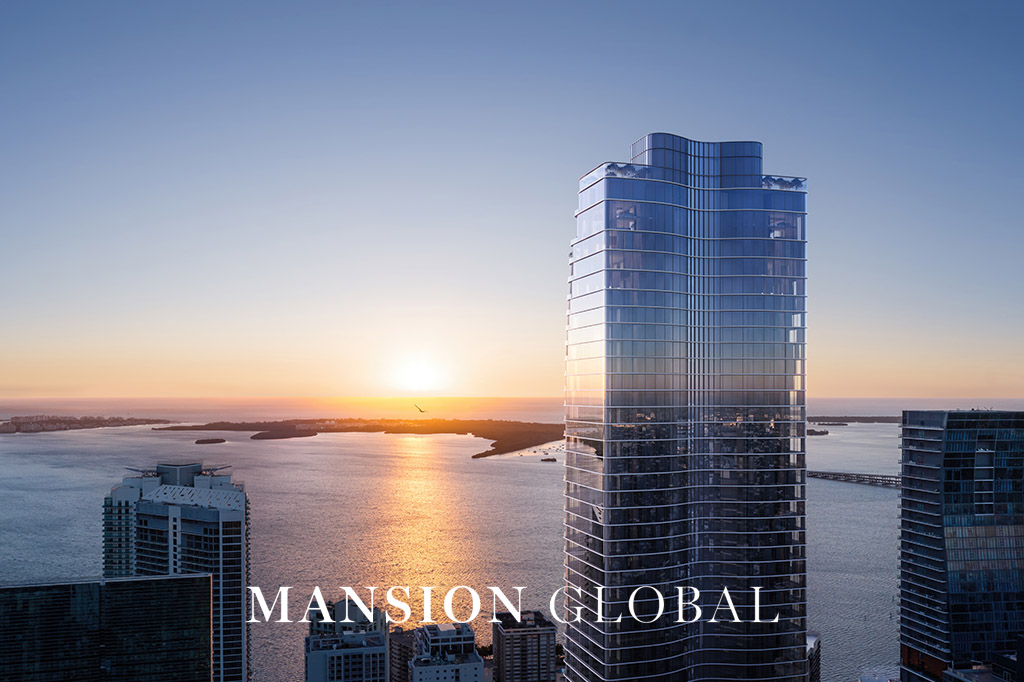
Luxury Condo Buildings Are Solar Power’s Next Frontier
More and more luxury homeowners have added solar panels to their homes to help save on utility costs and reduce their carbon footprints. So far, high-end condo developers haven’t tapped into the trend—but that could be changing.
Earlier this year, developer Ytech of Miami unveiled designs for a 70-story tower it says will be the first solar-powered high-rise residential building.
The project, The Residences at 1428 Brickell, is set to incorporate 20,000 square feet of photovoltaic-integrated panels on the west-facing facade that will create a “solar backbone” running up the building. The system is meant to be capable of producing up to 170,000 kilowatts of clean energy per year—enough to power parts of the building’s amenity spaces and common areas, but not the residents’ homes, which will be powered conventionally.
Luxury high-rises typically haven’t found installing solar roofs to be efficient, as there’s too little roof space to power multiple apartments. Single-family homes, on the other hand, have a greater amount of roof space available relative to energy consumption.
MANSION GLOBAL BOUTIQUE: 9 Stylish Home Picks From Women-Led Businesses
“A lot of solar is horizontal—with the type of building that we have, that’s really not possible,” said Andrew Kraynak, chief marketing officer at YTech.
But now, architects are incorporating “building-integrated photovoltaics” into their designs, like the panels to be used at 1428 Brickell. These are solar panels that can be installed on a building’s facade, rather than on the rooftop, unlocking far more of a high-rises’ surface area for energy production.
While these new building materials could allow for more widespread use of solar power in condo towers, critics caution against overstating the impact they will have on energy use. Most systems are still early in development and don’t produce energy at the same levels as more traditional roof-powered solar systems.
Still, developers like Ytech are pushing forward, with hopes of creating a new standard for luxury buildings.
“We really wanted to push the envelope to deliver something that’s exceptional in craftsmanship, sophistication, comfort, and the idea of sustainability is core to that,” Mr. Kraynak said.
Luckily for them, Ytech and developers like them have an array of photovoltaic options on the market to choose from that, just a few years ago, didn’t exist.
For example, the Toronto-based Mitrex and the Dutch company Solarix are both developing solar panels that come in different colors and patterns that can be used to cover a building’s facade. The designs so far have mostly been used on office and industrial buildings.
In Redwood City, California, Ubiquitous Energy is developing a transparent “solar window” that generates electricity by capturing the energy in ultraviolet and infrared waves, while allowing visible light to pass through.
“So far solar technology has asked: ‘How can we maximize the efficiency that solar technologies operate at?’” said Veeral Hardev, vice president of strategy at Ubiquitous Energy. “In the last 10 to 15 years, people started to look at alternate solar technologies—things that don’t look like traditional solar technology.”
But these newer technologies aren’t without their drawbacks.
There’s an issue of direct sunlight. Without a proper study on future development in the area, building management could find one day that their panels’ sunlight is blocked by a new neighboring tower.
Meanwhile, prioritizing a building’s aesthetic can come at the expense of generating more solar power. Mitrex’s colored panels, for instance, are 10% less efficient than traditional panels. Ubiquitous Energy’s windows, because they capture just part of the light emitted by the sun, are just 20% as efficient as the best-in-class solar panels.
“I don’t actually see in the next 10 years that we will think of [solar] windows as an alternative to rooftop photovoltaic,” Vivian Loftness, a professor at Carnegie Mellon’s Wilton E. Scott Institute for Energy Innovation, recently told CNET. “I don’t think their potential is going to be close to anything near what we can get out of a roof.”
Mr. Hardev sees technology like solar windows as complementary in a building aiming to be more energy efficient.
“We don’t really expect our technology or our solar windows to replace traditional solar or rooftop solar,” he said. For him, it’s a matter of capitalizing on every square inch of a building’s surface area to be used in generating power.
“If you’re going to have windows anyways, why not have windows that double as solar panels?” he added.
More: A Guide to Spring New Development Launches Around the World

